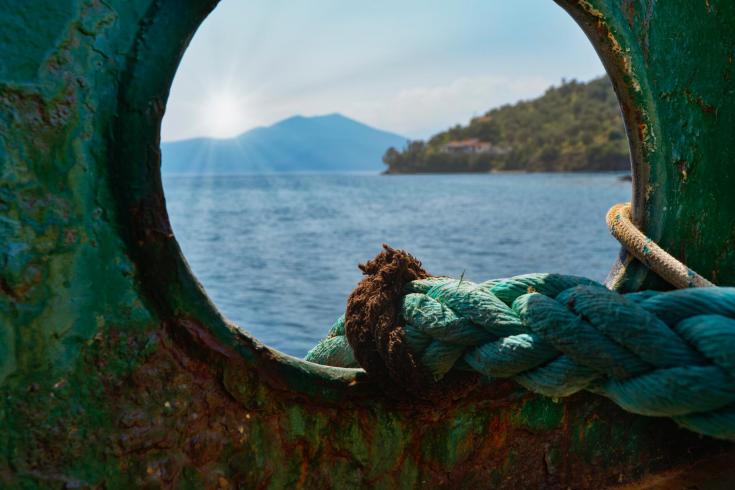Maritime cultural heritage

Maritime tangible and intangible cultural heritage tells a story of people’s millennial relation with marine and coastal environments. Maritime objects, historic ships, shipwrecks, bridges and maritime cultural landscapes also provide a sense of place and strengthen cultural identity. Their preservation and valorisation can also bring economic benefits specifically in relation to sustainable tourism development.
Coastal and maritime cultural heritage is at risk today from various pressures such as the loss of traditional fishing fleets, neglect, climate change, pollution, or urbanisation. Many regional and local actors join efforts in addressing these challenges within the framework of various EU-funded projects on maritime cultural heritage such as PERICLES and BalticRIM. Several Interreg Europe projects also work on this topic and identified good examples from European regions demonstrating the potential and opportunities of Europe’s diverse maritime cultural heritage, while protecting and preserving it for future generations. The examples from Spain and the Netherlands hereafter illustrate positive experiences in this policy area.
The sailors, the fishermen, the craftsmen working together to save historic boats, CHERISH project
The old fishery wharf 'Meerman' in Arnemuiden (the Netherlands), which originates from 1786, was facing the danger of closing down due to economic difficulties. The owner of the wharf, local (retired) fishermen and other craftsmen took the initiative to save it by establishing a foundation for the preservation of old sailing vessels. As a result, more than 20 sailing vessels, which are in use today, have been restored on the basis of old plans and photos. Some of the vessels are owned by the foundation and can be booked for a day trip at the nearby lake. Other boats were sold to private owners who also sail with them. Besides, the technical information such as drawings, moulds, tools, etc. of the wharf was saved as well. The initiative also put an emphasis on the need to preserve and disseminate old craftsmanship, building traditions and skills.
The main barrier in this process was the lack of knowledge on restoring old historic vessels as it is no longer taught in the traditional educational institutions. To address this gap, the craftsmen provide on-the-job training to young people regarding the old crafts and techniques for preserving historic sailing vessels. The wharf receives 7,000 EUR yearly from the Municipality of Middelburg to preserve and exploit the wharf and its museum. Objects such as moulds and tools which are now museum pieces are also at the same time used in practice.
The wharf is a good example of a bottom-up initiative for preserving maritime cultural heritage based on active engagement of the community and support from the municipality. Stakeholders involved in the process include the fishing community, volunteers with interest in old craftsmanship, technical schools in Zeeland, the local museum, etc.
Local maritime heritage: a powerful economic driver, HERICOAST project
Another example of preservation and valorisation of tangible and intangible cultural heritage comes from the coastal city of Lekeitio (Basque country, Spain). In 2005 the city council of Lekeitio launched a project with the objective to turn the municipality into a maritime heritage centre.
Four areas were identified for intervention:
- Santa Catalina Lighthouse's conversion into a visitor's centre based on navigational technology;
- Recovery of the Lea-Mendieta Shipyard;
- Visitor's centre of the Marierrota Tide Mill;
- Preservation of the intangible heritage (traditional recipes, songs, etc.).
For each of these areas a recovery plan was prepared emphasising the economic opportunities the recovery could generate. Particular attention was paid to balancing heritage preservation with its sustainable exploitation. The practice proved to be successful and resulted in economic gains such as a rise in seven times the number of visitors and creation of eight new businesses, as well as new jobs. Involving stakeholders in the process such as businesses, experts in heritage preservation as well as integrating the policy measures in the supra municipal plans (regional tourism plan, Basque costal tourism plan) are essential elements of the approach. Citizen engagement in the recovery of the heritage contributed to increased awareness of local identity and heritage.
The municipality of Lekeitio was a pioneer in the recovery and valorisation of maritime cultural heritage and its experience was transferred to other municipalities in Spain for them to develop a more evidence-based development policy around marine cultural heritage.
The potential of maritime heritage
The above-mentioned examples are inspiring illustrations of different ways in which maritime cultural heritage can activate joint action and partnerships between businesses, citizens, and public authorities and stimulate sustainable economic development and social cohesion. Either supporting bottom-up initiatives such as the Fishery wharf in Arnemuiden, or taking a top down approach for a comprehensive development strategy like in the case of Lekeitio, these experiences can serve as an inspiration for other regions striving for preservation and valorisation of their cultural heritage.
